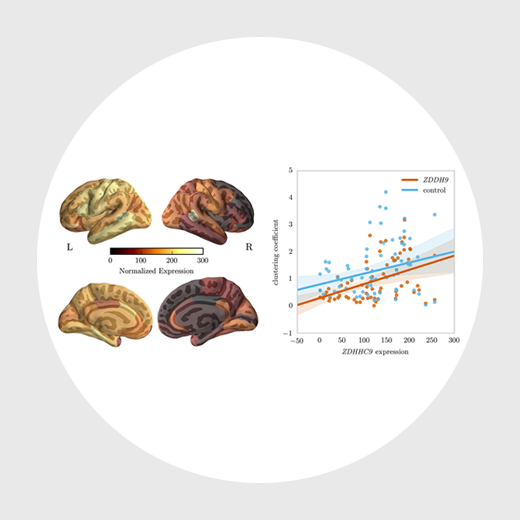Structural connectivity and patterns of gene expression provide insight into the mechanisms that may lead to the cognitive effects of a single-gene mutation
Neurodevelopmental disorders are difficult to investigate because various biological causes may lead to the clusters of behaviours that are grouped within a diagnostic category. Focusing on neurodevelopmental disorder with a genetic origin allows the researcher to establish the neurobiological processes that mediate cognitive and behavioural outcomes.
Researchers at the CBU investigated white matter structural connectivity in a group of individuals with intellectual disability due to mutations in a single gene. The results showed that the single gene mutation influenced the structural connections between brain areas. By combining this information with gene expression patterns from an online database, it could further be shown that brain regions with higher expression of this gene are typically more interconnected. The results demonstrate that a mutation in a single gene can impact upon white matter organisation across the whole-brain, but also shows regionally specific effects, which may link to specific developmental mechanisms and correspond to specific cognitive deficits.
The full text can be viewed at: https://academic.oup.com/cercor/article/2972125/Global-and-Local-Connectivity-Differences-Converge


 MRC Cognition and Brain Sciences Unit
MRC Cognition and Brain Sciences Unit

